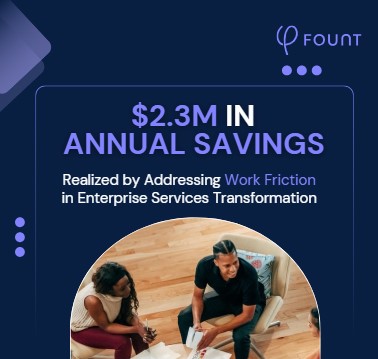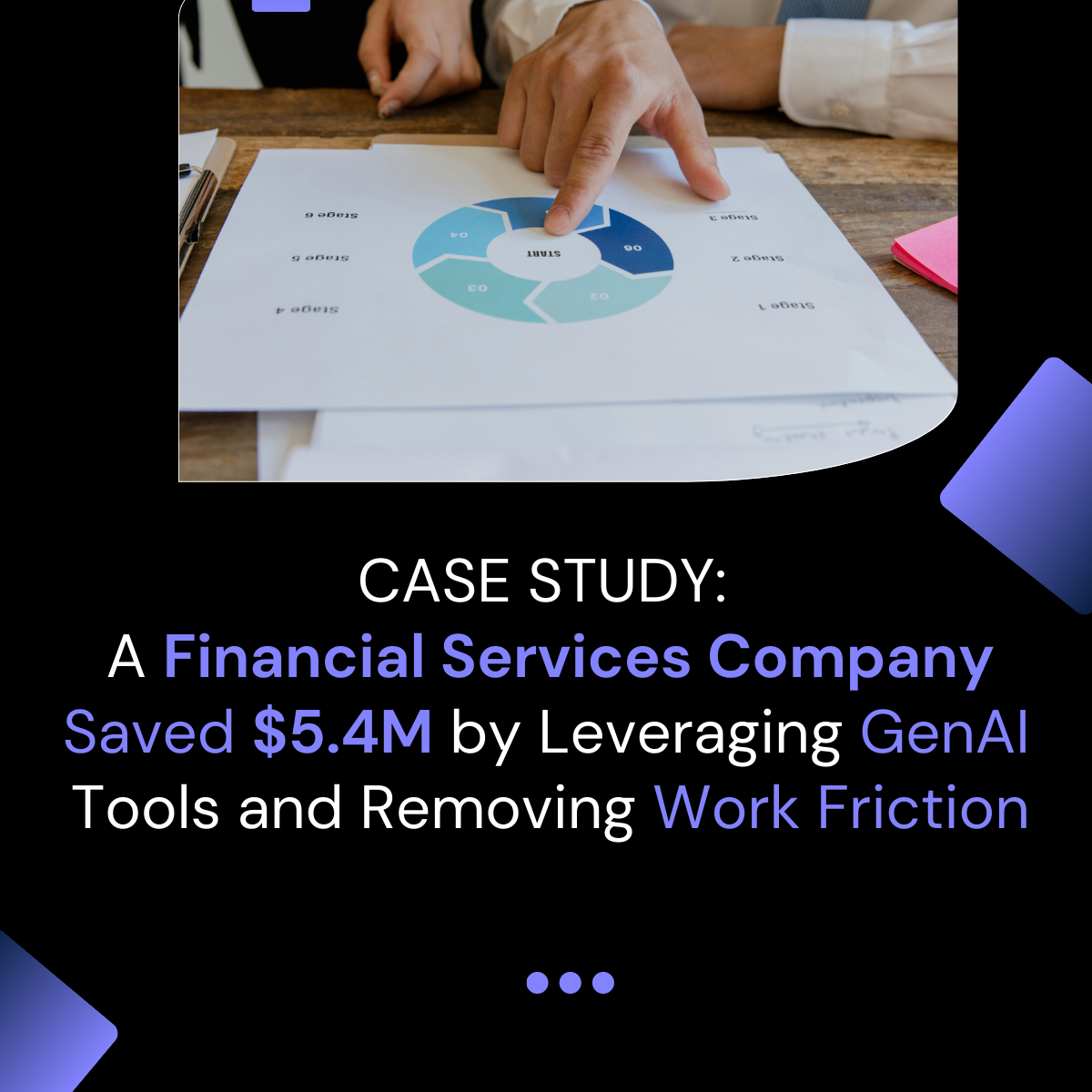Table of Contents
PODCAST: Work Friction: Less is More
A summary of the details of the article will go here.
Have you ever felt slowed down at work by small, annoying tasks? This is called work friction, and it can make it hard to get things done and affect how well we serve our customers.
The podcast episode “Work Friction: Less is More” from The CX Leader Podcast talks about how to deal with these issues. Host Patrick Gibbons and guest Christophe Martel, CEO of FOUNT, share ideas on how to make work smoother for everyone.
Christophe defines work friction as the myriads of tasks—like excessive documentation and endless meetings—that detract from customer interaction. Such tasks dilute productivity and diminish the quality of service provided.
“Friction is everything you do when you don’t spend time with customers. That’s all the documenting the stuff that you’re doing and participating in endless meetings to try to close the loop on the matrix.”
These tasks take away time that could be spent with customers.
You can listen to the full episode on Apple Podcasts, YouTube or Spotify. A transcript from the episode appears below.
Transcript
PG:
It feels really good when we’re productive, right? But when something gets in the way of completing our work, man, it can ruin your day.
CM:
Friction is everything you do when you don’t spend time with customers, right? Like, that’s all the documenting the stuff that you’re doing and participating in endless meetings to try to close the loop on the matrix, like, these are all things that take time, and that’s time that’s away from customers.
PG:
Let’s take a look at reducing the friction we experience in our work on this episode of The CX Leader Podcast.
Announcer:
The CX Leader Podcast is produced by Walker, an experience management firm that helps our clients accelerate their XM success. You can find out more at walkerinfo.com.
PG:
Hello everyone, I’m Pat Gibbons, I’m host of this week’s episode of The CX Leader Podcast. And as always, thank you for listening. You know, it’s never been a better time to be a CX leader. And we explore topics and themes to help leaders like you deliver amazing experiences for your customers. You know, we’ve all experienced it. The nagging, frustrating, and sometimes maddening feeling we get when something collides with our productivity. And while it can sometimes feel trivial, that type of friction, it just adds up and it affects our interactions with our customers, thus affecting the customer experience. So how do we minimize those points of friction in the workplace? Well, our guest today has a unique perspective on work friction and can help us unpack this topic. Christophe Martel is the CEO of FOUNT, a software platform designed to help reduce friction and improve productivity and employee experiences. Christophe, welcome to The CX Leader Podcast.
CM:
Thanks for having me this afternoon.
PG:
Well, it’s you know, this is an interesting topic. Like many professionals, I’ve kind of become more and more interested in these topics that look at the interaction between the employee experience and the customer experience. You know, we all know there’s a connection, but really getting into the details of that and knowing how to drive things that are, you know, crucial to employees that we know have an effect on customers, really, you know, trying to address those issues. That can be a tougher situation. And I think this is, you know, right in the middle of that. So, so let me start at the beginning. You know, the term “work friction,” what do we mean by that, and how did you get into this?
CM:
So, I got into it by having worked for a long time and experienced a lot of work friction firsthand.
PG:
Okay. That’s sometimes how…
CM:
In various…
PG:
…It happens,
CM:
…organizations.
PG:
Right?
CM:
Yeah. but actually, uh, more recently, I worked for a company called CEB. Uh, the Corporate Executive Board, where it was a business leader for many years. On, you know, head of EMEA based out of London, and realized firsthand, first of all, the how important customer experience is, and it was also a topic we studied at the time, and also realizing how important employee experience was in driving good customer experience. And in that in many ways, right. Like, first of all, you know, cranky customer facing employees, don’t make for great experiences for customers. But also, people that don’t stay in seat very long are, you know, up and the customer experience because you now have someone new and is not yet, you know, trained enough to serve customers at the, at the right standards and so and so forth. So tried to figure out a way as a business leader to solve that problem of how do I manage employee experience in a way that’s more deliberate than what it currently is, never really managed to do so and accept, you know, the typical things of better leadership and better culture, etc. and then shifted roles and moved to HR and became CHRO for CEB, uh, and to actually take a shot at fixing this employee experience thin, and discovered that as a CTO is also really hard to do,
CM:
…you don’t really have visibility into what is really happening when people do their work. Uh, and that kind of brought, uh, me to, uh, creating FOUNT, which is about understanding not so much how people feel about the company they work for and, uh, even feel about the work they do. But what it is that gets in the way of them being successful at their work or being successful in all these things they attempt to do while at work.
PG:
Right.
CM:
And that includes learning and growing and everything else.
PG:
Yeah, maybe, um, give us a few examples of, um, you know, common friction that someone would see in a particular position.
CM:
So in customer facing roles. So think about sales folks. Friction is, uh, everything you do when you don’t spend time with customers.
CM:
Right? Like, that’s a, uh, all the, uh, the documenting the stuff that you’re doing and participating in endless meetings to try to, you know, close the loop on, on, on the matrix. Like, these are all things that take time and that’s time that’s away from customers. Um, when you are in a more, uh, customer service environment, call center environment, uh, it’s everything that prevents you from serving your customer in the way that you would want to. And that means if it’s a complex policy situation, do you have all the right tools at your fingertips to solve the problem? Do you have the right escalation, escalation, uh, path that is available to you to problem solve or not? Right. And so that is, uh, and when you don’t, it’s actually makes employees incredibly frustrated that the company asks them to do, uh, what is a difficult job, usually, uh, and doesn’t make it as easy as possible for them to do so. So juggling multiple systems, uh, multiple sources of information, like, all of that stuff gets in the way of doing what they’re trying to do, which is to do a good job with customers. And then the last one in the retail world where, um, when a cashier machine breaks down, what does the person at the at the till do? Uh, except being embarrassed by the line that’s just, you know, getting bigger and bigger by the minute. And when no one comes to help and fix the machine. Uh, it’s a it’s just a very bad situation to be in as an employee because you’re letting customers down. Uh, and you personally feel pretty terrible.
PG:
Right.
CM:
Uh, so these are these are examples.
PG:
Yeah. No. That’s good. And I you know, I think it starts with the premise that you got to expect most people want to do a good job. You know, I’m, I’m thinking just of a recent example. It’s a maybe a trivial one. But, you know, I went to the pharmacy to pick up a prescription, and and this has happened repeatedly. They’ll log in and they, they usually have this frustrated roll of their eyes. They’re like, oh, the system’s rebooting, you know, and…
PG:
…you know, they they’re experiencing frustration. And some of it is because they know that I’m just standing there watching them, you know.
CM:
And also it reflects poorly on them. Right. So that the company that they work for, uh, has not made it easier for, uh, for you to get what you need. It’s it’s a and we did research on this with the, uh, like the main reasons why people dislike work friction are not about their, their financial or even career interests. It’s all about, uh, it wastes my time. It slows me down, makes it hard for me to do a good job. Um, it makes more work. Like I’m basically wasting. Like, why do you make it harder than than it should? And when you think about, uh, us as customers. Right. So remember that these employees are also consumers on, you know, the other side of their, uh, of their day. They’re used to a pretty, uh, frictionless experience as consumers. And and that gap is, is growing.
PG:
Right.
CM:
Uh, and with every passing generation, there’s less tolerance, uh, for putting up with the, you know, the… I think it was called the Sunday to Monday shock. Right.
PG:
Uh huh. Well, you mentioned something that was just, uh, crossing my mind is the generational side of this, I’m assuming, um, again, I’m thinking young people are so comfortable with technology and the way that they, um, that issues are solved and shopping is done. And, you know, there’s an omnichannel approach to so many things. You can go in a store, you can do things online, you can do it on the app that, uh, yeah, the tolerance level must be…
CM:
Yeah.
PG:
…particularly low with that audience. Is that what you find?
CM:
It’s absolutely our data shows it experienced professionals and know that experience is shaped by expectations and expectations. Uh, for, you know, Gen Z workers are pretty different from, uh, I don’t know, mine. Right. There’s there’s born in France in the 60s. I have pretty high tolerance for work friction because I’ve seen all kinds…
PG:
Right.
CM:
…of it. Uh, but, uh, my son, who was uh, was 22, has very different standards, and that kind of governs the kind of employer and the kind of work that, uh, you would want to do. Um, and that, you know, um, uh, is just an evolution of, uh, of, uh, that, that is, that is driven by his experience as a consumer. Uh, that is more and more, you know, digitally enabled and, and frictionless.
PG:
Right. Right.
CM:
So it’s, uh, so for us, the definition of work friction is anything that gets in my way at work that shouldn’t. Right. So the it’s, uh, not not all friction is, is bad, right? The work is often full of friction because, you know, customers are not always, uh, happy, etc. but the employees understand that and they, they can deal with that as long as the company doesn’t make doesn’t make it harder than it should, uh, to conduct, uh, the work that they’re trying to conduct.
PG:
I would think too, in, you know, in some industries there would be regulatory issues that okay, that it’s it’s a step in the process. But many are it’s established for the right reasons. But I think, like you work in the hospitals or with nurses and so forth, they probably have those. But uh, you try to make them as easy to work through as possible.
CM:
Yes. So one very interesting thing about, you know, the work friction is in the eye of the beholder, right? It’s very much like a, honestly, CX, like a good customer experience is in the eye of the customer. Anyone inside the company who pretends they know, uh, doesn’t. Well, for, uh, employees, it’s the same thing. Uh, and so if you think about the regulated environments or, uh, banks, for example, uh, the of all kinds have usually very heavy processes that makes customer experience more difficult than it should be. Um, and also that makes employees experience more difficult than it should be, as long as the perception from the employees is that the bank does everything it can to make it easy for them, they’re okay with regulation. They understand why it’s there and the purpose it serves. And I would say the same thing about, uh, nurses and doctors, etc. uh, they know where the the line is for. Yeah. What is imposed by the regulatory environment. And, but how you help me deal with that difficulty and how you show up when, uh, I get in trouble, that is how you get judged.
PM:
Right. Right. Yeah. I think it just seems like a lot of it is just being able to empower employees with the right tools, processes and such that they feel like they can be effective in what they do.
CM:
Yes. So the notion of empowerment is a is very familiar to and to the CX world indeed because it’s a it’s a real quality word. Right. It’s a let them you know, like in the hospitality business like let employees solve problems as they see them on the spot and be empowered to do so. Um, what what ends up empowering people is not, uh, lots of great communications and or trying to make them feel empowered. It’s actually about making it easy for them to make the right decisions and to carry out what they’re trying to, to do.
PG:
Yeah.
CM:
And in most organizations we work with, in customer facing roles, you see, uh, an amazing amount of opportunity to remove things rather than add things. And there’s a very big tendency for, uh, companies that are trying to solve employee problems to say. Let’s buy a new piece of technology and put it in there, because it’s going to make it easier for them. But you do that. And how do you know if it really is making things easier or not? Uh, and that is the the concept that FOUNT stands for, which is you don’t know unless you have data that shows what activities are made easier by that investment you’ve just made. And where has that investment actually slowed things down? Because we often find that a new things also create friction, and maybe not in the initial area that it was intended to solve, but in other areas and often the superposition of platforms and tools, etc. ends up creating so much complexity for employees that, uh, yeah, you may solve one thing, but actually create more friction overall.
PG:
Right.
CM:
And so that that phenomenon of, uh, kind of in customer facing roles, less is more, uh, is a really powerful one that, uh, our data tries to enable, uh, leaders to, to start acting on, Uh, to make work simpler, uh, for their customer facing teams.
PG:
Right.So what are the ways that, um, that you, your platform or your work helps identify all the points? And what are people trying to do to reduce work friction?
CM:
You know, so the first, uh, first thing that’s that’s really maybe that’s worth mentioning to this audience is the the link between EX and CX is well documented. Most of the organizations we work with have connected these data sets in some way, shape or form to say, we know that if our employees feel better about their work, they’re, uh, you know, going to deliver it better CX. Uh, one of our customers mentioned recently, for every two points of NPS going up, I know that it’s, uh, about $450 million of extra revenue that will come in. So there’s a very clear understanding of that.
PG:
Right.
CM:
Uh, there’s also a clear understanding that the drive to reduce friction for customers tends to take that friction and to bring it in-house. Right. Because where else is it going to go?
PG:
Right.
CM:
Uh, and then so now, uh, some of the friction that customers use to bear is now borne by employees. And then comes the question is like, well, how do you manage that? Like how do you first of all identify it? And the way we we do this is with what we call a moment centric approach. So that…
PG:
Okay.
CM:
…i s, you know, familiar to any CX practitioner, except that the universe of moments that you have to consider for an employee is much more complex than the universe of moments that the customer has, uh, because employees do, uh, you know, have lots and lots and lots of different activities that they carry out at work. Plus they have things that they do at work that have to do with their life at work, such as I want to learn. I want to grow my career. I want to change roles I want to deal with. I don’t know, a situation at home and the company needs to help me. And on all of these dimensions, whether it’s in the activities of work or the activities that are more tied to my life at work, friction is likely to occur. And the question is how much occurs. And we are measuring that. But also the question is what causes it? And in each one of these moments, you have a different set of interactions that are going to create friction, very much like in this world that you have to unpack and you have to get in the weeds of it to go and find data that will tell you what to fix.
CM:
Um, so, uh, it’s, uh, you know, it’s just a massive, um, mapping essentially of, uh, the experience of employees, uh, that gets in the detail of the moments and touchpoints that they experience. And that is where you find friction. You can quantify it, and once you can quantify it, you can bring that back to leaders that essentially shape the work. So operations leaders, CX leaders, IT leaders, and put everyone in front of that data set and say, okay, how do we collaboratively solve for all these touchpoints that are not doing the job that they’re supposed to do?
PG:
Right. And…
CM:
And then things move.
PG:
Yeah. And I assume that there’s they would go through kind of a prioritization. They’d be looking at here’s…
CM:
Yes.
PG:
You know…
CM:
Very true.
PG:
The ones that I should start with or that here’s easy ones that we could tackle right away is that, uh…
CM:
Yes.
PG:
…kind of the process.
CM:
So the prioritization is about where when because the question is, you know, since it occurs in a moment when someone is trying to do something right, or an employee is trying to solve a complex customer issue, for example. Uh, so which of these moments, uh, um, contain the most friction? So in a call center environment, handling an abusive caller, for example, is very high friction. Uh, because it’s tough, right? Um, uh, and then which of these moments are high importance for these employees? Uh, and this importance level can be measured on impact on their intent to stay at the company. So, you know, this makes me so mad that you have so much friction that I will quit.
PG:
Yeah.
CM:
Uh, or it can be measured on the impact it has on their productivity or various other dimensions. Um, and usually because friction is everywhere and this universe of moment is really complex, companies tend to focus on like a pack of two, three, four, five moments at a time and get those better and then move on to the next tranche.
PG:
Yeah.
CM:
Um, very much like you do in the CX world.
PG:
Right? Right. Interesting. Uh, so, you know, when I think of all of this together, um, what what do you see as the overall business impact? I mean, how do you measure to be able to say, you know, we’ve been effective at eliminating some friction and, you know, here’s here’s the effect it’s had on our business.
CM:
So, um, first of all, to measure friction. Uh, you don’t have two, two ways about it. You have to get friction data. And so…
PG:
Yeah.
CM:
…if you if you think about the world of employees, most of the data that we have about employees in large organizations is essentially engagement data, right? Sentiment data, how people feel about the company, its strategy, and so on and so forth, which is all great when it comes to, you know, um, good engagement and good team dynamics. But it doesn’t tell you anything about what gets in people’s ways.
PG:
Yeah,
CM:
Um, and
PG:
It’s a good point.
CM:
Um, so the, the so the first things first, you’ve got to measure this. You got to get friction data to do it. Now, the impact it has when you start improving and reducing friction is pretty significant. That’s impact is distributed in three channels. Uh, you know, uh, the first one is wasted work. When people deal with friction, they waste time. Uh, and actually Gartner, uh, estimated that it’s about two hours per worker per day. That is wasted to work friction, either…
PG:
That’s significant.
CM:
…you know, hacking through it, passing it on to somebody else, uh, you know, being just stomped by it and just discouraged, uh, or burning out with it, whatever the whatever it is, like two hours a day is a massive amount of waste at work.
PG:
Yeah.
CM:
Um, so channel one, channel two. Uh, it takes a toll on discretionary effort because people, uh, that, that feel that their company does not have their back when it comes to doing the job they’re supposed to do, like, well, you want me to go the extra mile, and yet you make it difficult for me to do my work. Right. Like that doesn’t feel like a balanced, uh, story. Um, and, um, there’s a notion of fairness, like. Yeah, you. If you have my back, I’ll have yours. Uh, and discretionary effort is very important for good CX. Right. Like that is where, uh, going the extra mile. Uh, you know, figuring out a creative solution does not happen if you’re, you’re not feeling it as…
PG:
Right?
CM:
…an employee.
PG:
Right.
CM:
And then the third is intent to stay right. And intent to stay is basically your attrition rates. And you know that the leaky bucket is a terrible curse in the world…
PG:
Yeah.
CM:
…of CX. Uh, because people come in and walk out and, uh, CX suffers every time. So, uh, from our estimates and from customers that we work with, for someone who 10,000 people organization reducing friction by about 20%, we’re talking about a $30 million, uh, $30 million a year opportunity.
PG:
Right.
CM:
Uh, that’s pure cash, right? So this is not growth or things like that. It’s…
PG:
Bottom line.
CM:
…dollars saved. Bottom line.
PG:
Yeah.
CM:
So, uh, that is significant. And for, you know, and that’s just reducing friction by a fifth. So it’s not solving it all. Um…
PG:
Yeah.
CM:
Yeah.
PG:
That’s no it’s it’s significant. And as you kind of go through those those steps of what’s involved and I think you know just like we said in the opening, it can be really frustrating. And I think any of us can see how that can easily lead to um, you know, attrition and, you know, all the impacts along the way…
CM:
That’s right.
PG:
…and how it affects the customer. So…
CM:
And by the way, there is a belief that our data actually seems to, uh, to challenge in many cases, which is people leave managers, the people, you know the story. People…
PG:
Yes.
CM:
…don’t leave organizations. They leave managers?
PG:
Right.
CM:
Actually, uh, you find that people don’t really leave managers. They leave work. It’s the work that they don’t want to do,
PG:
Yeah.
CM:
Because it’s just they don’t feel that they can be successful. And, uh, yeah. Now, maybe the manager plays a role in there, but the manager is just a touch point in the story.
PG:
Right.
CM:
Uh, the way the work is organized is actually usually not the manager’s choice. Certainly not in, uh, in big scale customer facing roles. So…
PG:
Uh. Makes sense. Well, Christophe, we are at the point of our broadcast that we always ask our guests for some take home value. So specifically, we’re looking for one tip or piece of advice that a CX leader could take away from this conversation and put to use right away in their organization.
CM:
So first thing is actually not a piece of advice, but just an observation from many of the organizations we work with. CX leaders play a huge role in managing EX. Uh, this this system of employees and customers on both sides of that little fence there. You need to manage that as a system. And we see that when CX leaders partner with employee experience leaders, great things happen. They can use similar tools. They can, uh, you know, get results on both sides of, of the fence. Uh, so there is a role for CX leaders to play, uh, and don’t expect HR to solve it for you. You got to lean in, uh, and often HR doesn’t have the right tools to help you solve it, but that’s another story. Um, now, the thing that I would do if you’re kind of new to this idea of friction, uh, like work friction, go and sit down with, um, a frontline employee, a customer facing employee, uh, and ask them about, uh, the three, 4 or 5 big things that they do in their work and pick one of these activities and ask them where they experience friction in that activity and listen to what they say. And you will hear often pages long of reason why their job is difficult because the company makes it difficult. Uh, and just realizing that the elephant is in the room is kind of step one. Uh, then once you know it’s in the room, you can, um, figure out how to measure that and how to improve it over time. Uh, but just that’s, that’s a way of spending an hour in talking with one of your customer facing employees, understanding what their job is like and what where they experience friction. Uh, you’ll see how much opportunity there is for improvement.
PG:
Right. It’s a great suggestion. And of course, the thing I love about it is it truly is something that somebody listening to this podcast could leave their desk right now, or when they get into work, if they’re listening in the car, they could go do this today. So you followed the rules. Very well done.
CM:
Thank you. Well, I came prepared because you’d asked me so.
PG:
Yeah. It’s good. Good. Um, Christophe, if somebody wants to continue the conversation with you, can they reach out to you either on your website or LinkedIn? What’s what’s the…
CM:
Absolutely.
PG:
…best way?
CM:
So on our website is is getfount.com and many of many of these things are there. There’s a research there’s white papers, there’s um blogs newsletters all kinds of things, uh, little demos and the like. And then to reach out to me on, on LinkedIn, uh, I’m Christophe Martel, uh, I’m saying it with the French accent just…
PG:
Okay…
CM:
…to, to show you off. Um, and, um, yeah, uh, just, uh, get in touch. Very passionate about this, uh, this topic. There’s way too much work, friction in the world, and we don’t need it. Really.
PG:
Yeah. Great. So Christophe is the CEO and founder of FOUNT. Christophe, thanks for being on The CX Leader Podcast. Really appreciate it.
CM:
It’s been a pleasure. Thank you very much, Pat.
PG:
And if you want to discuss this topic with one of our experts, or have a great idea for a topic for a future episode, email us at podcast@walkerinfo.com. We’d love to hear from you. And be sure to rate The CX Leader Podcast through your podcast service and leave a review, because your feedback really helps us out, helps us improve the show, and deliver the best possible value to you, our listener. Check out our website cxleaderpodcast.com. From there you will find all of our episodes, over 300 episodes and a link to our blog, which we update regularly. The CX Leader Podcast is a production of Walker. We are an experience management firm that helps companies accelerate their XM success, and you can read more about us at walkerinfo.com. Thank you for listening and remember, it’s a great time to be a CX leader and we’ll see you next time.
About The CX Leader Podcast
The CX Leader Podcast is a resource for customer experience (CX) and experience management (XM) professionals. This podcast is hosted by Patrick Gibbons, Principal, SVP of Marketing & Experience Management, he helps companies put their customers at heart of every decision. He spent nearly 20 years working for Walker and lead or co-lead innovative projects.
To learn more about work friction, download our latest whitepaper.
Related Resources
See all News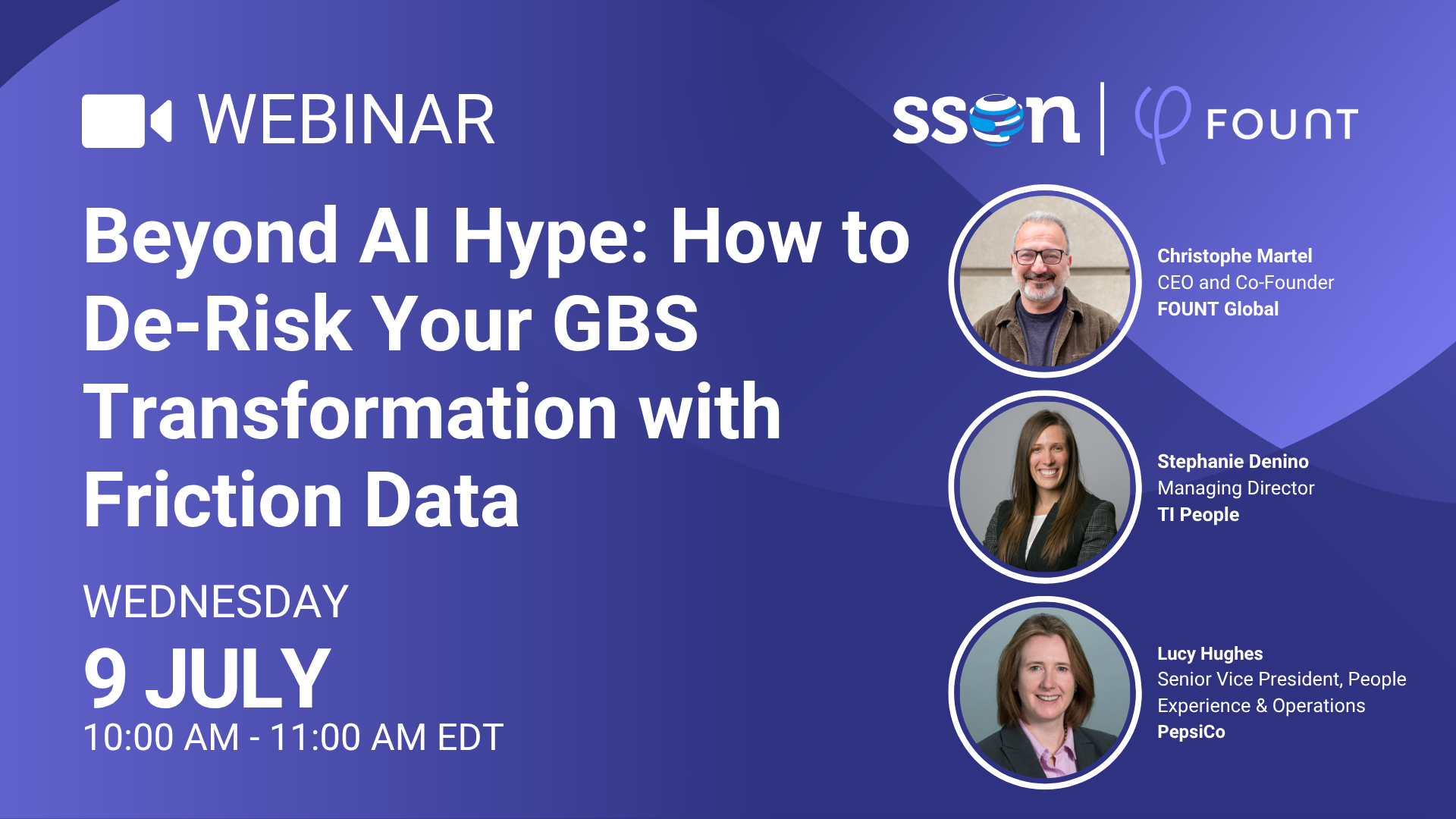
FOUNT News
LIVE Webinar. Beyond AI Hype: How to De-Risk Your GBS Transformation with Friction Data
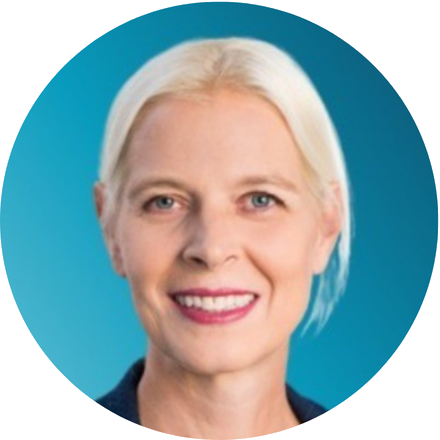
Guest Post
3 Signs Your GBS Is Creating Friction Instead of Flow (And How to Fix It)
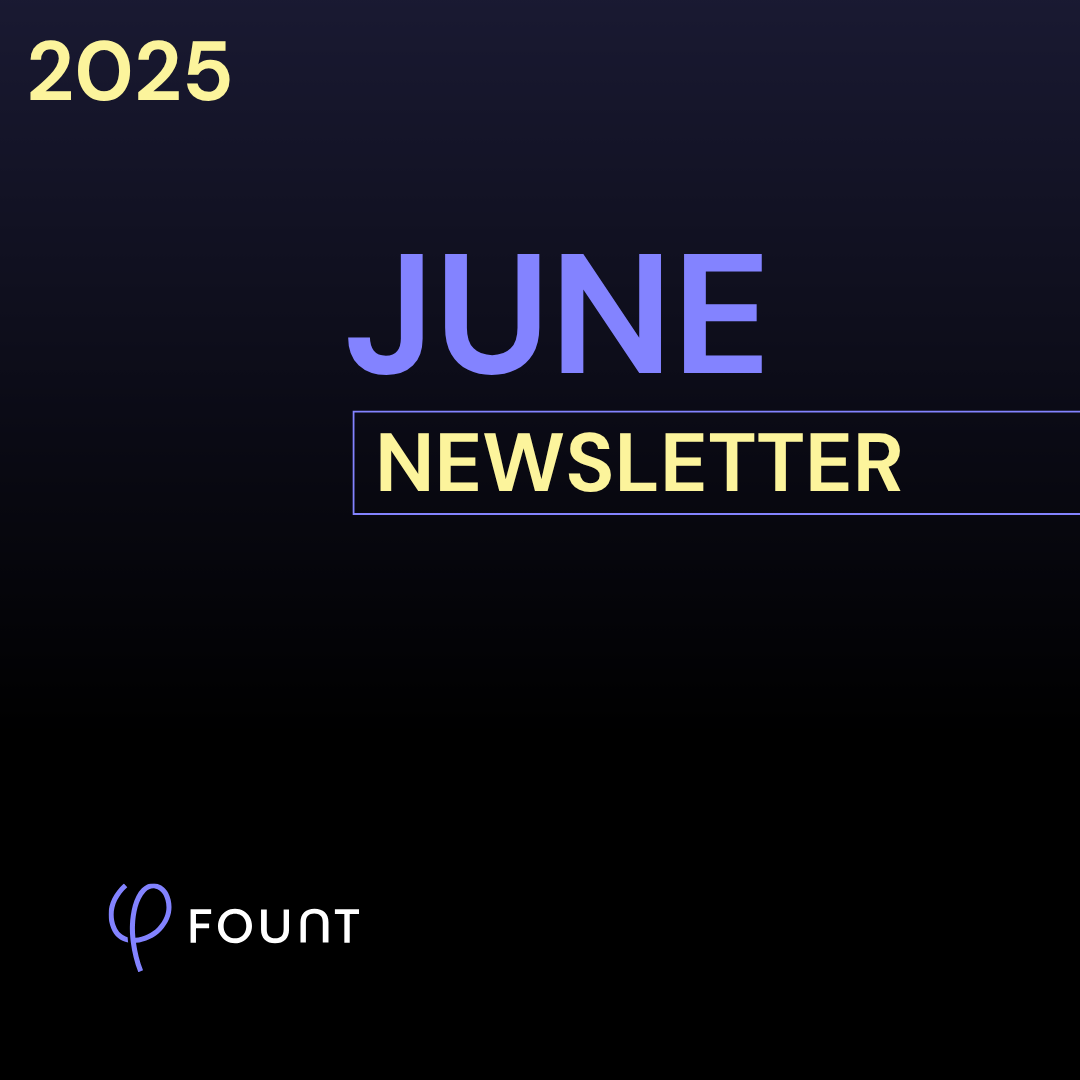
FOUNT News
June Newsletter: Friction is Killing Your AI ROI.
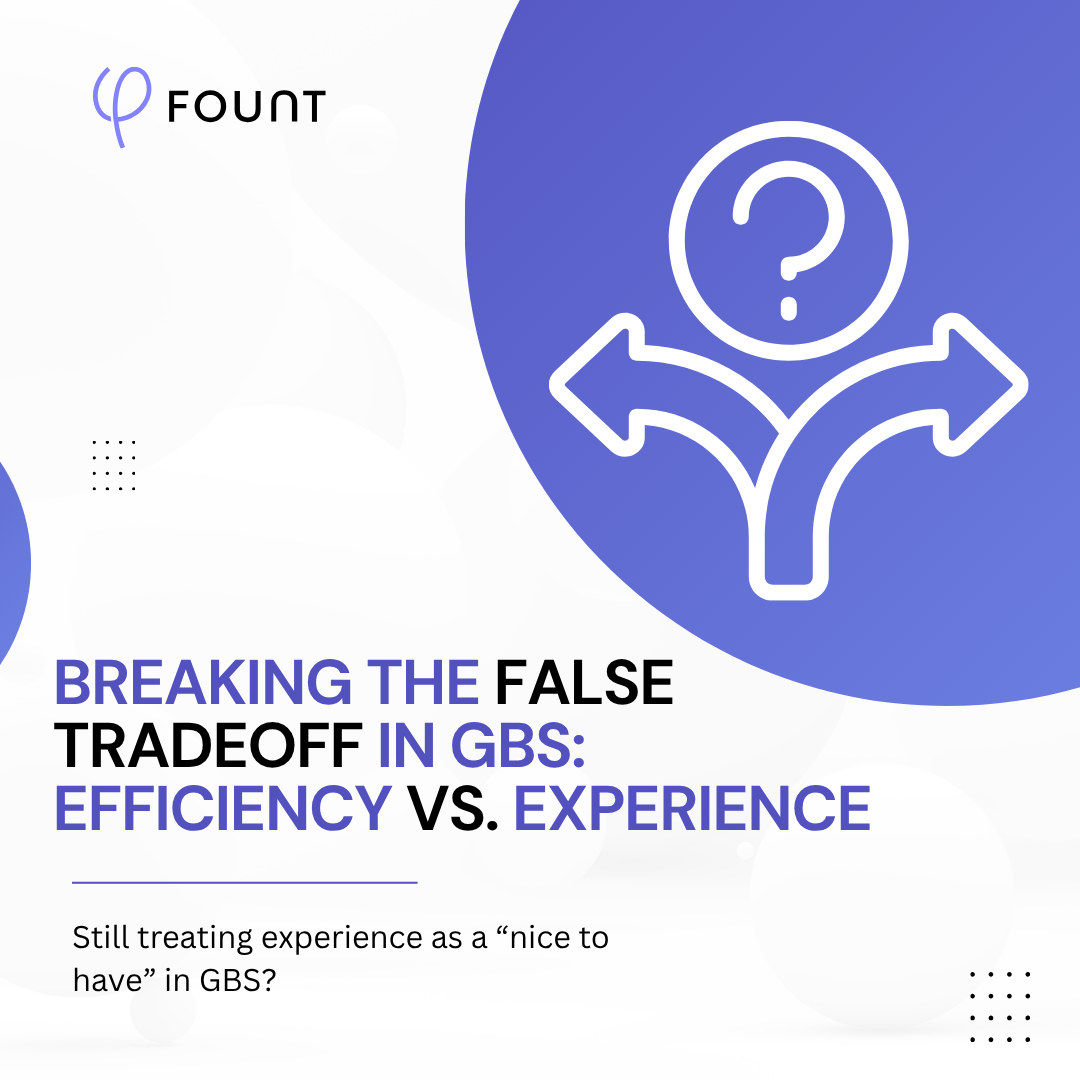
Insights
Breaking the False Tradeoff in GBS: Efficiency vs. Experience
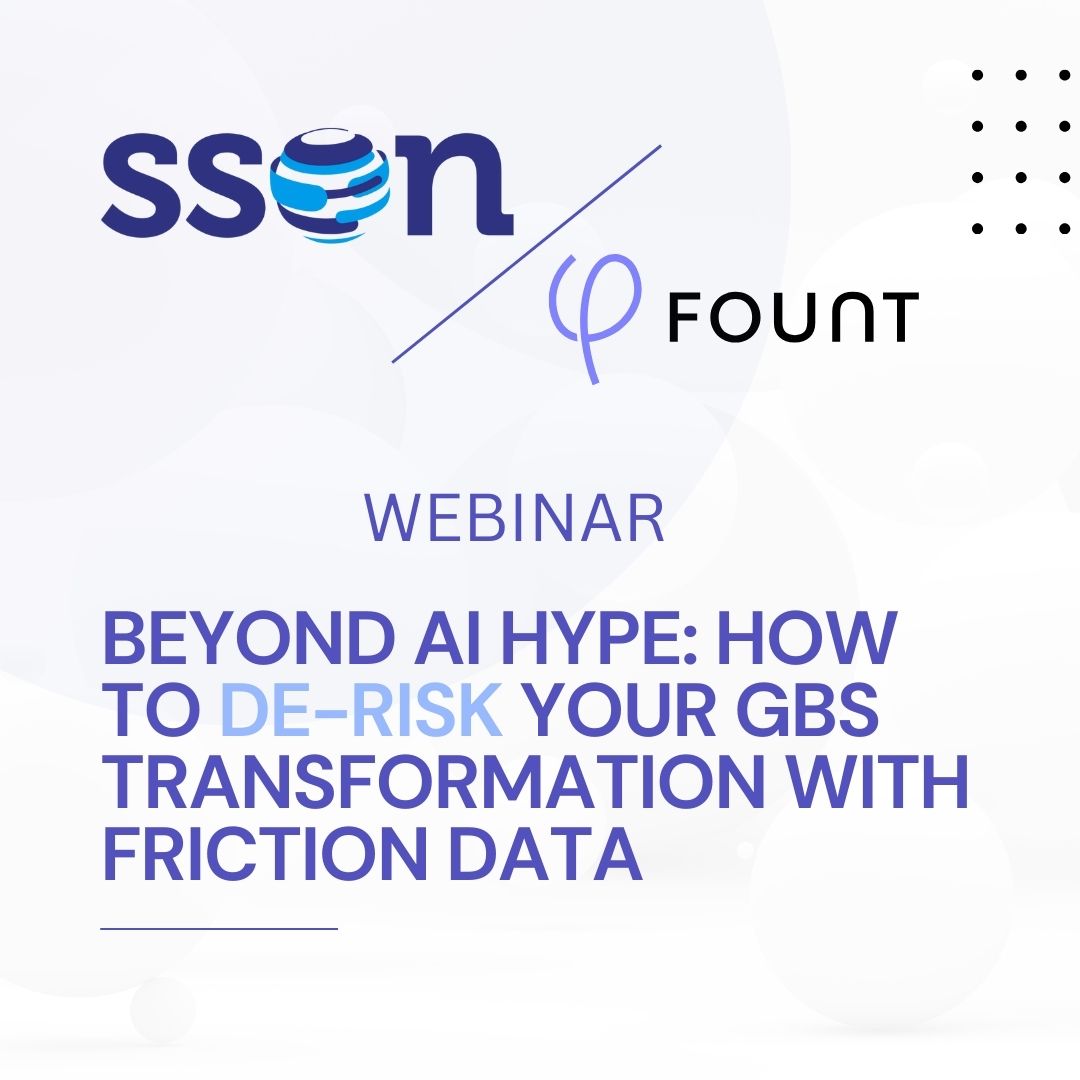
Events
LIVE Webinar – July 9th for SSON Network. Beyond AI Hype: How to De-Risk Your GBS Transformation with Friction Data
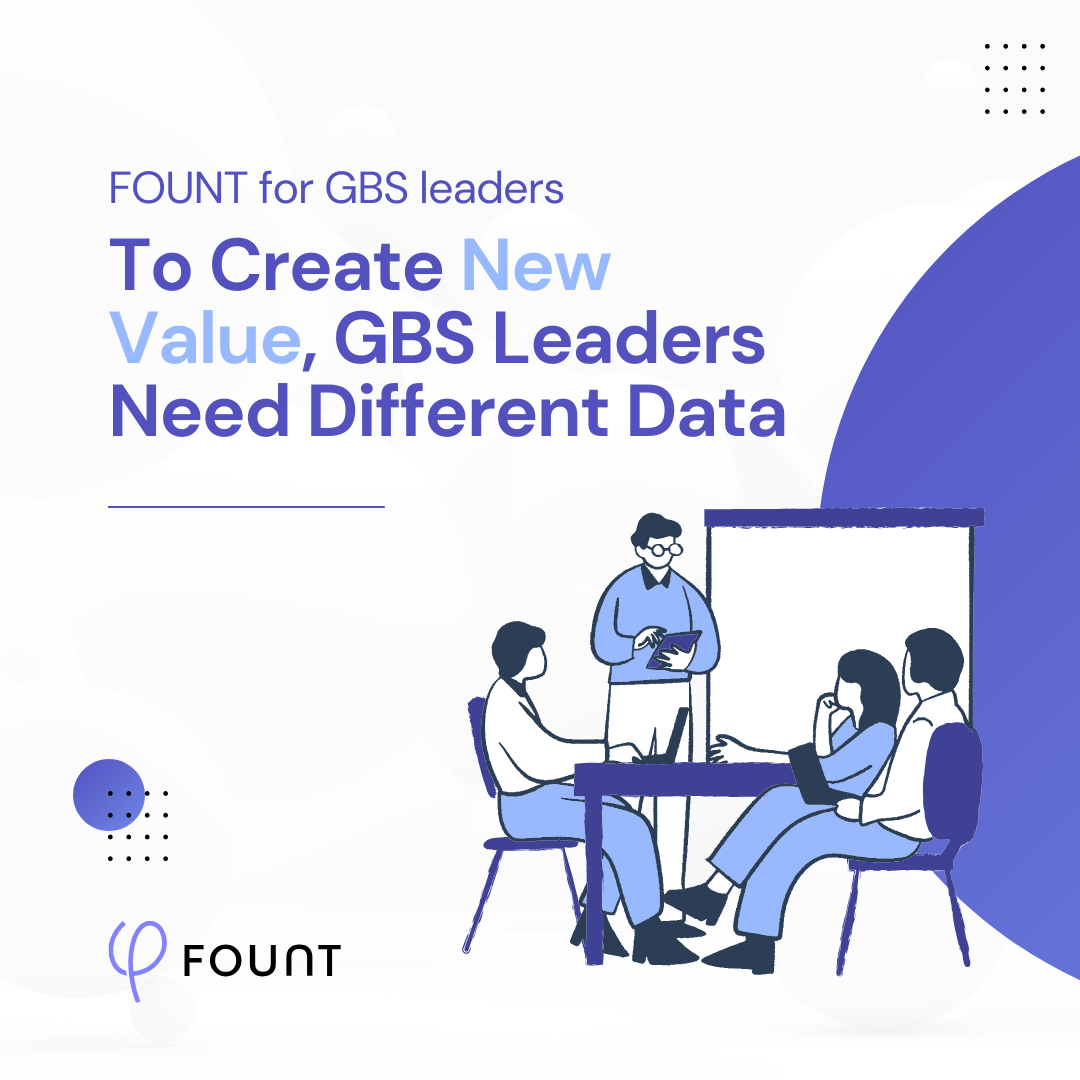
Insights
To Create New Value, GBS Leaders Need Different Data
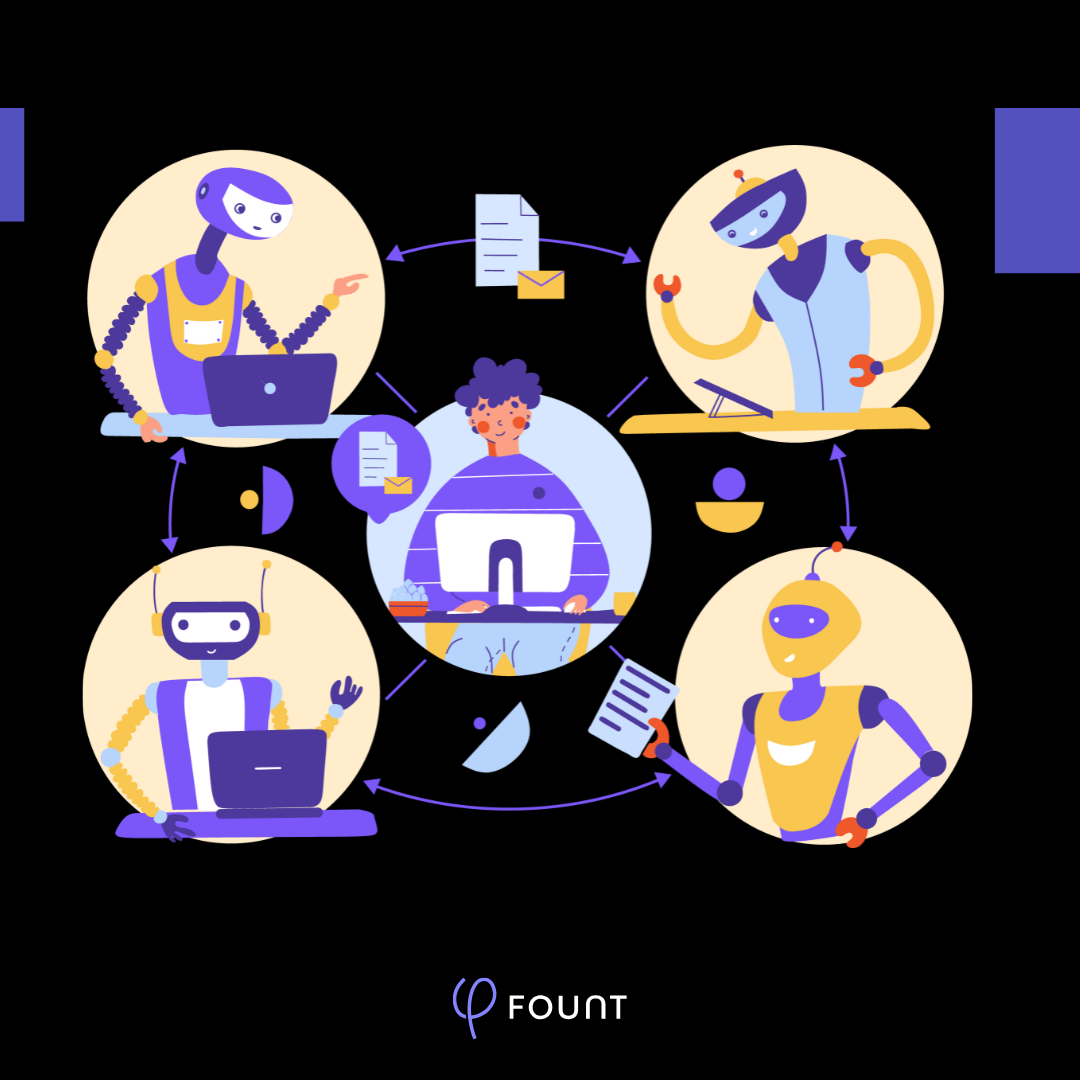
Insights
How to Keep Up with the Latest AI Developments
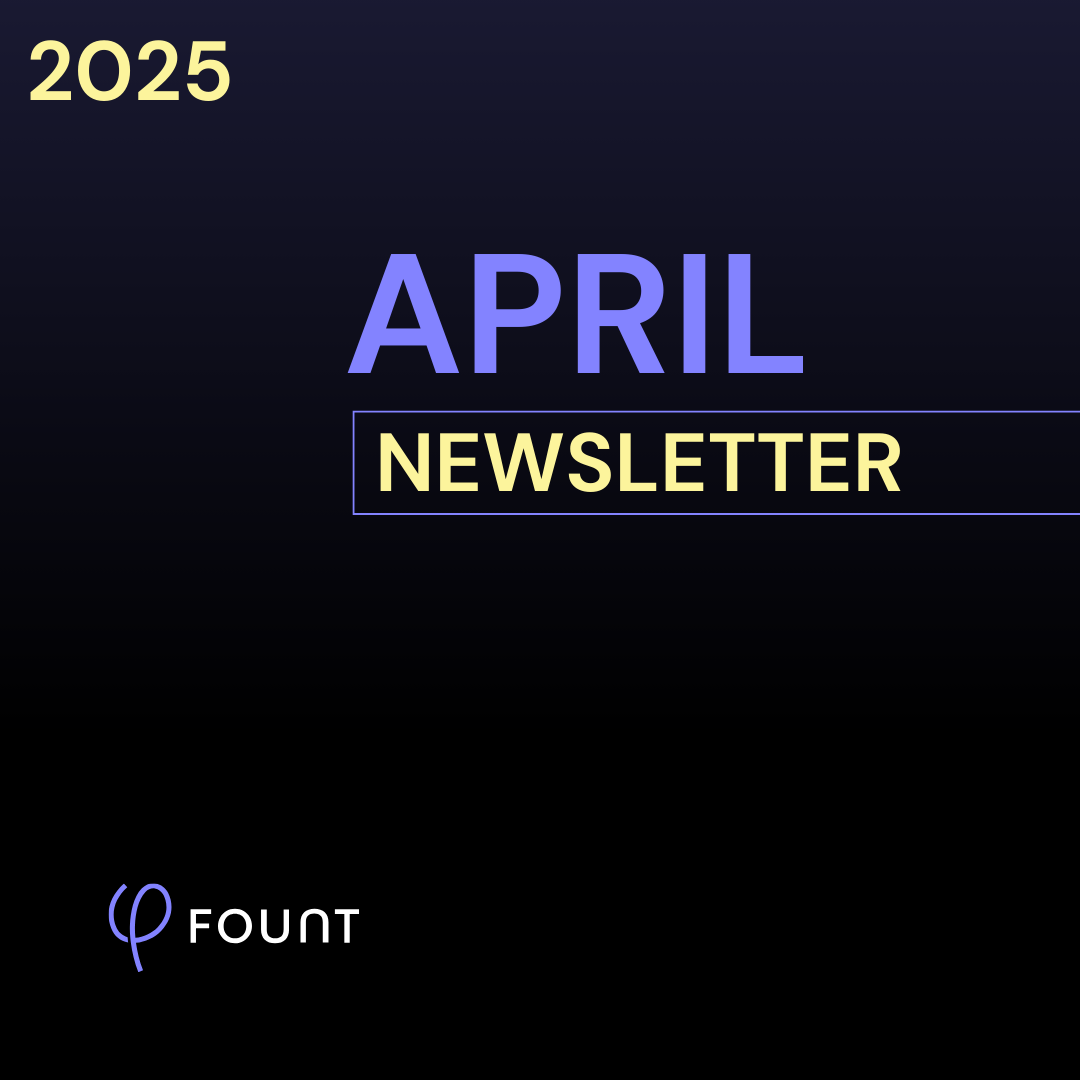
Insights
APRIL Newsletter. Friction: You Can’t Improve What You Can’t See
